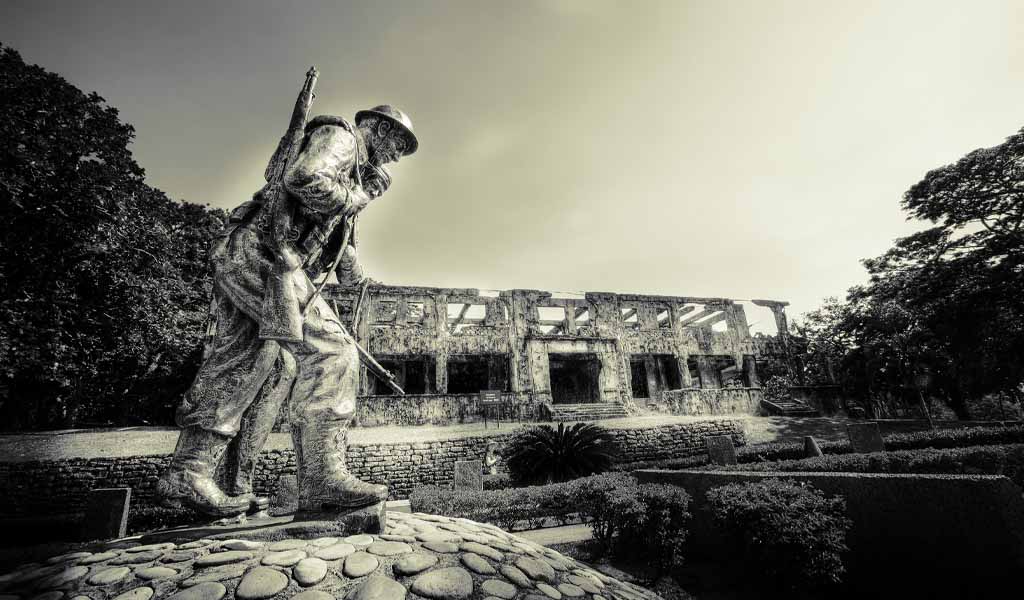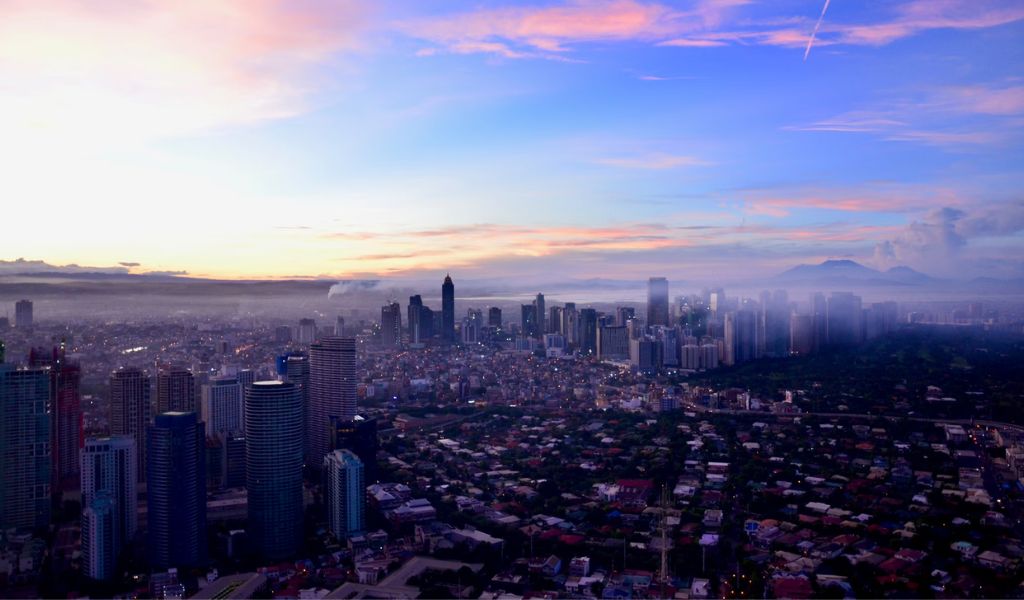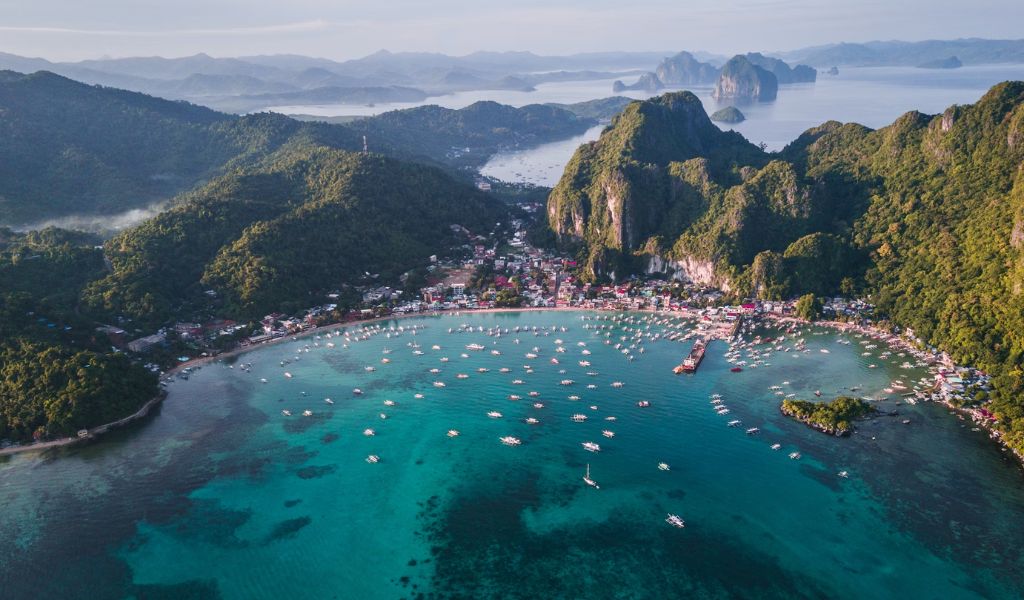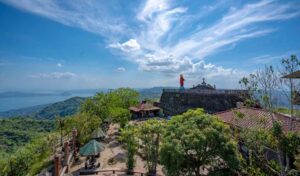An Introduction to Historical Places in the Philippines
The Philippines, a vibrant archipelago in Southeast Asia, boasts a rich tapestry of history woven through its countless islands. From ancient structures to colonial remnants, the historical places in the Philippines offer a fascinating journey through time. Whether you’re a history buff, a cultural enthusiast, or simply an avid traveler, these 15 historical places will leave you spellbound.
Intramuros, Manila

Intramuros, often referred to as the “Walled City,” is a historic district in Manila that stands as a testament to the Philippines’ colonial past. Built by the Spanish in the late 16th century, this fortified area served as the political, military, and religious center of their administration. Its cobblestone streets, massive stone walls, and beautifully preserved buildings offer a glimpse into life during the Spanish colonial era.
Key landmarks within Intramuros include Fort Santiago, a citadel that once housed national hero José Rizal before his execution, the San Agustin Church, the oldest stone church in the country, and the Manila Cathedral, a stunning example of neo-Romanesque architecture. Today, Intramuros is a vibrant blend of history and modernity, with museums, cultural sites, and quaint cafes that invite both locals and tourists to explore its rich heritage and enduring charm.
Fort Santiago, Manila

Fort Santiago, Manila, is a historic fortress that stands as a testament to the Philippines’ tumultuous past under Spanish rule. Constructed in 1571 by Spanish conquistador Miguel López de Legazpi, this citadel was part of the walled city of Intramuros and served as a key defense structure against foreign invasions. The fort is famously known as the place where Dr. José Rizal, the national hero of the Philippines, was imprisoned before his execution in 1896.
Today, Fort Santiago houses a shrine dedicated to Rizal, with a museum displaying his memorabilia, and offers visitors a chance to stroll through its beautifully landscaped gardens, explore the dungeons, and walk along the old ramparts, all of which provide a poignant glimpse into the country’s colonial history and its struggle for independence.
Rizal Park, Manila
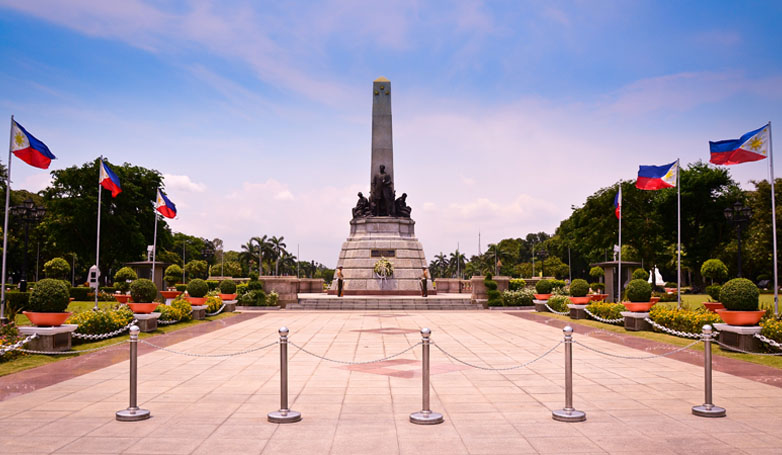
Rizal Park, Manila, also known as Luneta Park, is one of the most significant historical and cultural landmarks in the Philippines. Spanning 58 hectares, this urban park is dedicated to Dr. José Rizal, the national hero who was executed here on December 30, 1896, igniting the revolutionary fervor that eventually led to Philippine independence. At its heart stands the iconic Rizal Monument, which guards Rizal’s remains and serves as a symbol of Filipino nationalism.
The park is a verdant haven in the bustling city, featuring beautifully manicured gardens, ornamental fountains, and expansive lawns. It also houses several other notable attractions, such as the National Museum, the Chinese and Japanese Gardens, and an open-air auditorium for cultural performances. Rizal Park not only offers a serene retreat for locals and tourists but also serves as a poignant reminder of the nation’s rich history and enduring spirit of freedom.
San Agustin Church, Manila

San Agustin Church, Manila, is a historic and architectural gem located within the walls of Intramuros. As the oldest stone church in the Philippines, its construction was completed in 1607 by Spanish Augustinian friars, and it has since withstood numerous earthquakes, wars, and natural disasters. Recognized as a UNESCO World Heritage Site, this Baroque church is renowned for its intricate façade, stunning trompe-l’oeil murals, and a breathtakingly ornate interior that features a magnificent gilded altar, centuries-old religious artifacts, and a grand pipe organ.
The adjacent San Agustin Museum offers a rich collection of ecclesiastical relics, art, and historical items, providing a deep dive into the colonial era. San Agustin Church remains an active place of worship and a symbol of resilience and faith, drawing visitors from around the world to admire its beauty and historical significance.
Vigan City, Ilocos Sur

Vigan City, Ilocos Sur, is a remarkable and well-preserved example of a Spanish colonial town in Asia, celebrated for its unique blend of Filipino and Spanish architecture. Recognized as a UNESCO World Heritage Site, Vigan’s charming cobblestone streets are lined with ancestral homes, known as “bahay na bato,” which feature intricate woodwork and classic tiled roofs. The city’s historical core, highlighted by Calle Crisologo, transports visitors back to the 18th century with its horse-drawn carriages, vintage street lamps, and preserved colonial buildings.
Key attractions include the Vigan Cathedral, Plaza Salcedo, and the Syquia Mansion, each offering a glimpse into the rich history and cultural heritage of the region. Vigan is also known for its traditional crafts, such as pottery and weaving, and its distinctive cuisine, including the famous Vigan longganisa. This picturesque city not only serves as a vibrant testament to the Philippines’ colonial past but also as a living, breathing museum where history and culture are lovingly preserved and celebrated.
Paoay Church, Ilocos Norte

Paoay Church, located in Ilocos Norte, is one of the most iconic and historically significant structures in the Philippines. Officially known as the Saint Augustine Church, this remarkable edifice was completed in 1710 and is a striking example of Baroque architecture infused with local influences, commonly referred to as Earthquake Baroque. Its massive, buttressed walls, designed to withstand seismic activity, and its ornate façade adorned with floral carvings and stone reliefs make it a standout landmark.
The adjacent three-story bell tower, built separately from the church to prevent damage during earthquakes, adds to its unique charm and historical allure. Recognized as a UNESCO World Heritage Site, Paoay Church not only serves as a place of worship but also as a testament to the ingenuity and resilience of Filipino craftsmanship during the Spanish colonial period. Visitors are drawn to its majestic presence and the serene beauty of its surroundings, making it a must-visit destination for those exploring the cultural and historical landscapes of Ilocos Norte.
Corregidor Island, Cavite
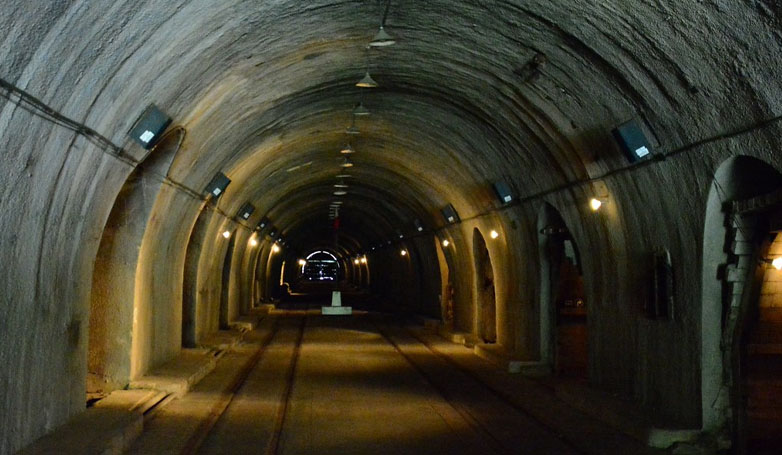
Corregidor Island, located at the entrance of Manila Bay in Cavite, is a historic and strategic military fortress known for its significant role during World War II. Often referred to as “The Rock” due to its rocky landscape and formidable defenses, Corregidor was a key site of resistance against Japanese forces during the Battle of Corregidor in 1942. The island is dotted with numerous war relics, including barracks, gun batteries, tunnels, and the Malinta Tunnel, which served as a bomb-proof headquarters and hospital during the war.
Visitors can explore the ruins of the Mile-Long Barracks, the Pacific War Memorial, and the Japanese Garden of Peace, each offering a poignant glimpse into the island’s tumultuous past. Accessible via ferry from Manila, Corregidor Island not only serves as a powerful reminder of the bravery and sacrifice of those who fought there but also offers stunning views of the surrounding sea and lush, tranquil landscapes, making it a profound and educational destination for history enthusiasts and travelers alike.
Taal Heritage Town, Batangas
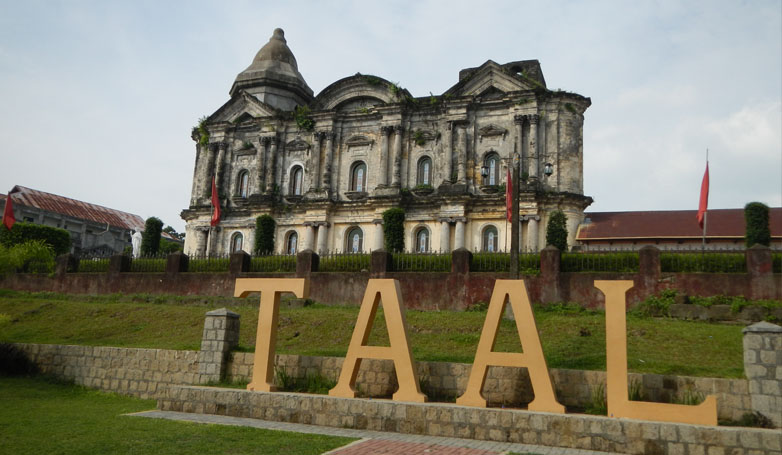
Taal Heritage Town, located in Batangas, is renowned for its well-preserved Spanish colonial architecture and rich cultural heritage. Often described as a living museum, this historic town is a captivating showcase of the Philippines’ colonial past, with its narrow streets lined with ancestral houses, grand churches, and centuries-old structures. The centerpiece is the majestic Taal Basilica, also known as the Minor Basilica of Saint Martin of Tours, which is the largest Catholic church in the country. The town is also famous for its traditional Filipino homes, such as the Agoncillo House and the Ylagan House, which feature elegant architecture, intricate woodwork, and antique furnishings.
Taal Heritage Town is not only a visual delight but also a center for traditional crafts, such as pottery and embroidery. Visitors can explore its vibrant public market, savor local delicacies like Taal’s famous longganisa, and immerse themselves in the rich history and culture that make Taal Heritage Town a quintessential example of Filipino heritage.
Malacañang Palace, Manila
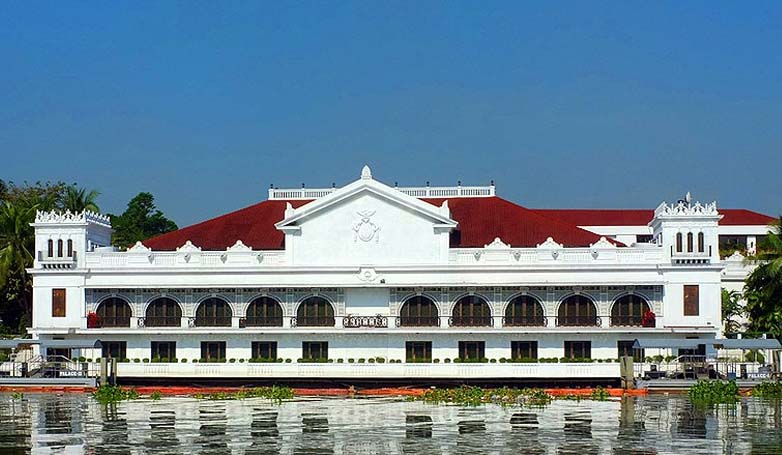
Malacañang Palace, located along the banks of the Pasig River in Manila, serves as the official residence and workplace of the President of the Philippines. Originally built as a country house in the early 18th century, it was converted into the presidential residence in 1863 and has since been the site of numerous historic events and political decisions. The palace’s architecture reflects a blend of Spanish colonial and modern influences, with elegant interiors that include the grand State Dining Room, the Music Room, and the President’s Bedroom.
Malacañang Palace is not only an iconic symbol of Philippine governance but also houses the Malacañang Museum, which offers visitors a glimpse into the country’s rich political history through exhibits of memorabilia, documents, and portraits of past presidents. The estate’s beautifully landscaped gardens and historic ambiance make it a significant cultural landmark, embodying both the heritage and the ongoing narrative of the nation’s leadership.
Banaue Rice Terraces, Ifugao
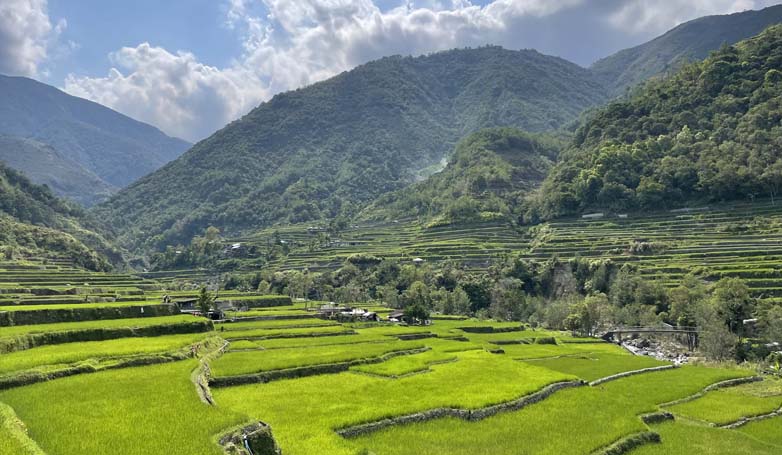
The Banaue Rice Terraces in Ifugao, often referred to as the “Eighth Wonder of the World,” are an extraordinary feat of ancient engineering and cultural heritage. Carved into the mountainsides over 2,000 years ago by the indigenous Ifugao people, these terraces exemplify the harmony between human ingenuity and nature. Spanning approximately 10,360 square kilometers, the terraces were meticulously crafted to create a sophisticated irrigation system that maximizes rainfall and soil fertility, allowing the cultivation of rice in an otherwise challenging terrain.
The intricate terraces, with their lush green fields cascading down the slopes, provide a breathtaking panorama and reflect the enduring traditions of Ifugao farming practices. Recognized as a UNESCO World Heritage Site, the Banaue Rice Terraces not only highlight the Ifugao’s agricultural prowess but also stand as a testament to their deep cultural connection with the land and their commitment to sustainable living. Must see the 8 Wonders of the Philippines.
Magellan’s Cross, Cebu
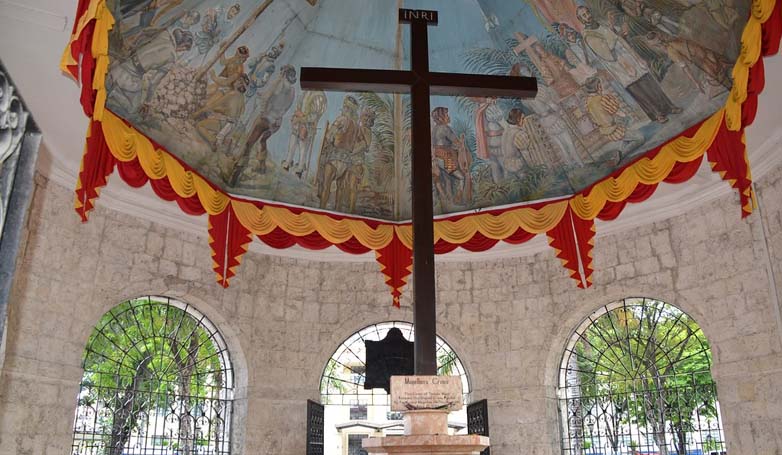
Magellan’s Cross, located in Cebu City, is a historic and revered landmark that marks the site where Portuguese explorer Ferdinand Magellan planted a cross on April 21, 1521, signifying the beginning of Christianity in the Philippines. This event is considered a pivotal moment in Philippine history, as it led to the widespread adoption of Christianity across the archipelago. The original cross, made of wood, is encased in a protective chapel built by the Spanish in 1565. The cross that stands today is a replica, but it continues to be a significant symbol of faith and cultural heritage.
The surrounding area, known as the Magellan’s Cross Pavilion, attracts numerous visitors and pilgrims who come to pay homage and learn about the historical impact of Magellan’s arrival. The site is also adjacent to the Basilica del Santo Niño, home to the oldest Christian relic in the Philippines, further enhancing its historical and religious significance.
Miagao Church, Iloilo
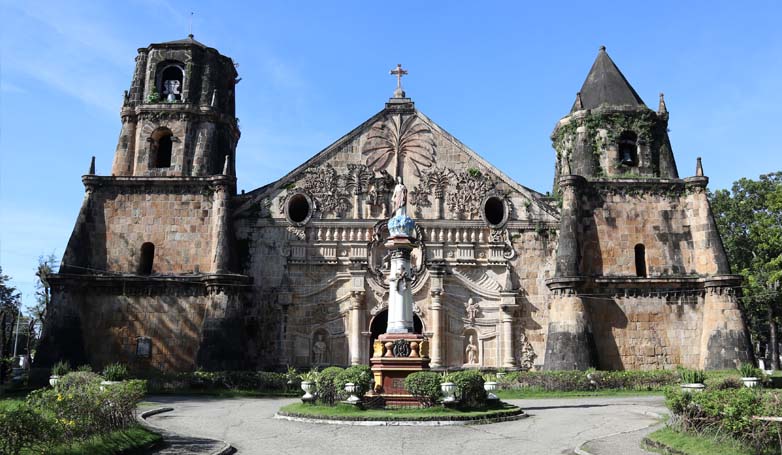
Miagao Church, officially known as the Santo Tomas de Villanueva Parish Church, is a stunning example of Baroque architecture with a distinctive local twist, located in Miagao, Iloilo. Constructed between 1786 and 1797, this UNESCO World Heritage Site is renowned for its intricately carved façade, which features unique motifs such as tropical flora and fauna, reflecting the fusion of Spanish and indigenous artistic influences. The church’s thick stone walls and fortified structure were designed to withstand the frequent raids by pirates during the colonial period.
Inside, the church boasts a richly decorated altar and beautiful wooden pews that enhance its historical charm. Miagao Church continues to serve as a vibrant center of worship and cultural heritage, drawing visitors who come to admire its architectural beauty and explore its significant role in the local community’s history.
Aguinaldo Shrine, Cavite

The Aguinaldo Shrine, located in Kawit, Cavite, is a historic landmark of immense significance in Philippine history. It was the residence of Emilio Aguinaldo, the first President of the Philippines, and is where the Declaration of Philippine Independence was made on June 12, 1898. The shrine is renowned for its large, white, colonial-style mansion with a distinct blend of Spanish and local architectural elements. The mansion is adorned with period furnishings and historical artifacts that provide a glimpse into the late 19th-century lifestyle and the revolutionary era.
The adjoining grounds feature a large monument commemorating the Independence Declaration and a museum that displays memorabilia from Aguinaldo’s life and the Philippine Revolution. The Aguinaldo Shrine not only serves as a poignant reminder of the country’s struggle for independence but also as a symbol of national pride and historical heritage, drawing visitors who seek to understand and celebrate the pivotal moments in Philippine history.
Malolos Historic Town Center, Bulacan
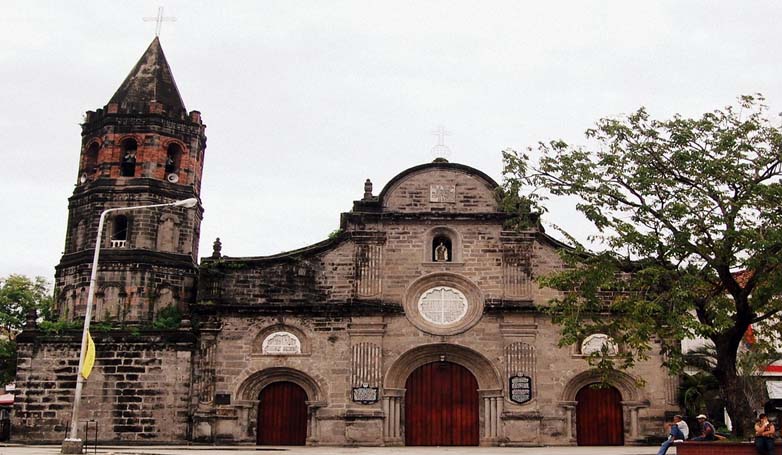
The Malolos Historic Town Center in Bulacan is a significant cultural and historical area known for its rich heritage and pivotal role in Philippine history. As the site of the First Philippine Republic’s establishment, it was here that the Malolos Congress convened from 1898 to 1899, marking a crucial period in the country’s journey towards independence. The town center is home to several historically important sites, including the Barasoain Church, renowned for hosting the first Philippine Republic’s constitutional assembly and serving as a backdrop to key events during the Philippine Revolution.
The town center features well-preserved Spanish colonial-era architecture, including ancestral homes and government buildings that reflect the town’s historical grandeur. Walking through the Malolos Historic Town Center offers visitors a vivid glimpse into the Philippines’ revolutionary past and the enduring legacy of its fight for freedom and nationhood.
Leyte Landing Memorial, Palo, Leyte

The Leyte Landing Memorial in Palo, Leyte, is a solemn and historic site commemorating the pivotal moment of World War II when General Douglas MacArthur, along with his troops, made a dramatic return to the Philippines on October 20, 1944. This event marked the beginning of the liberation of the Philippines from Japanese occupation. The memorial features a prominent statue of General MacArthur, with President Sergio Osmeña and General Jonathan M. Wainwright, capturing the iconic moment of their landing on the shores of Leyte.
The site also includes a series of historical markers and plaques that provide context about the significance of the landing and its impact on the course of the war. Surrounded by lush gardens and offering panoramic views of the surrounding area, the Leyte Landing Memorial serves as a powerful tribute to the bravery and sacrifice of those who fought for the country’s freedom, attracting visitors who come to pay their respects and reflect on this crucial chapter in Philippine and World War II history.
Conclusion
In conclusion, exploring historical places in the Philippines offers a profound glimpse into the nation’s rich cultural heritage and diverse historical tapestry. From the storied walls of Intramuros in Manila, reflecting the colonial past, to the ancient rice terraces of Banaue, showcasing indigenous ingenuity, these sites are more than mere landmarks—they are living chronicles of the Philippines’ journey through time. Each location, whether it’s the Revolutionary-era Rizal Shrine in Calamba or the Spanish-era churches of Vigan, provides invaluable insights into the country’s development, struggles, and triumphs. By visiting these historical places, one not only witnesses architectural marvels and historical artifacts but also gains a deeper appreciation for the resilience and cultural depth of the Filipino people.

